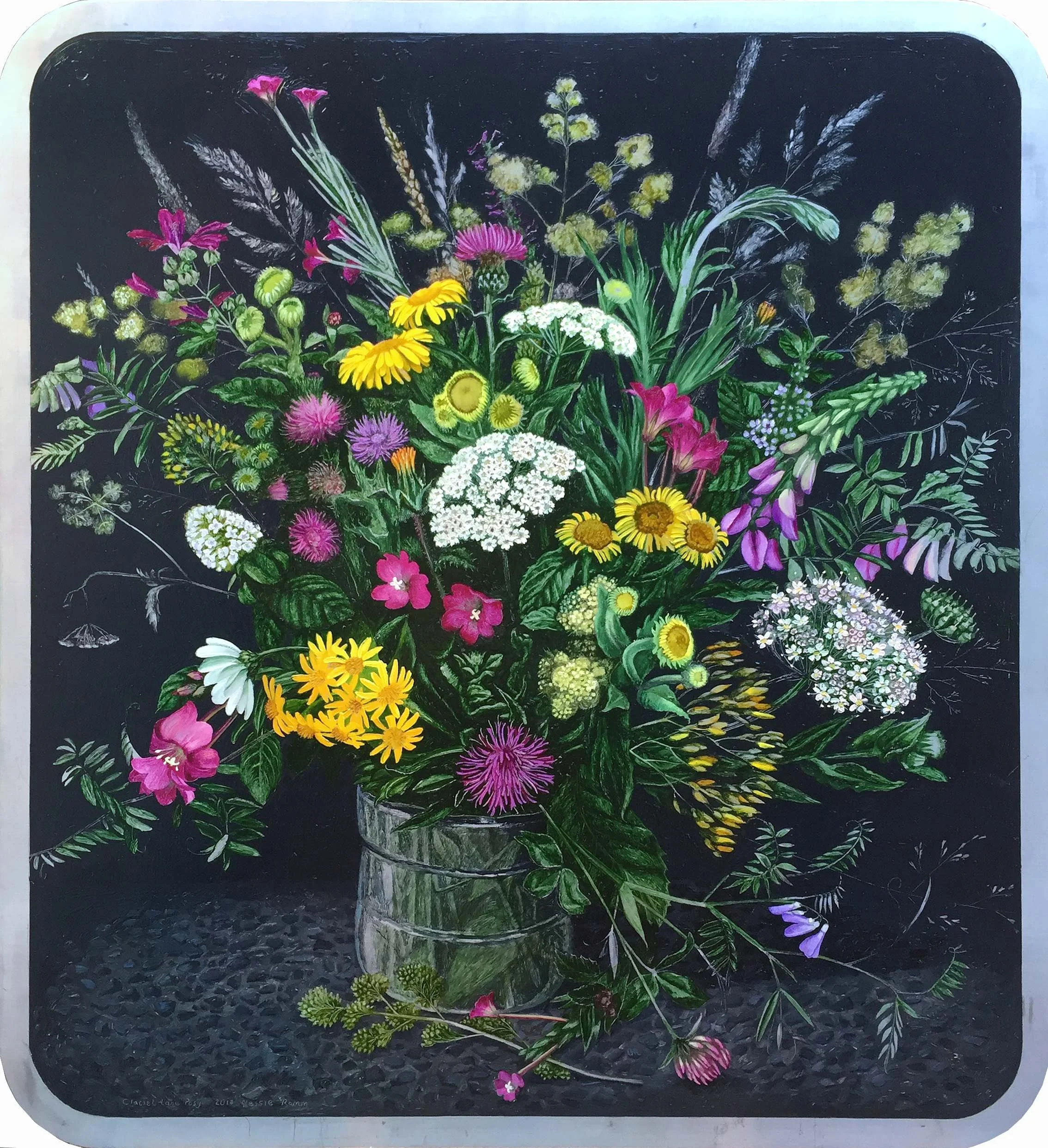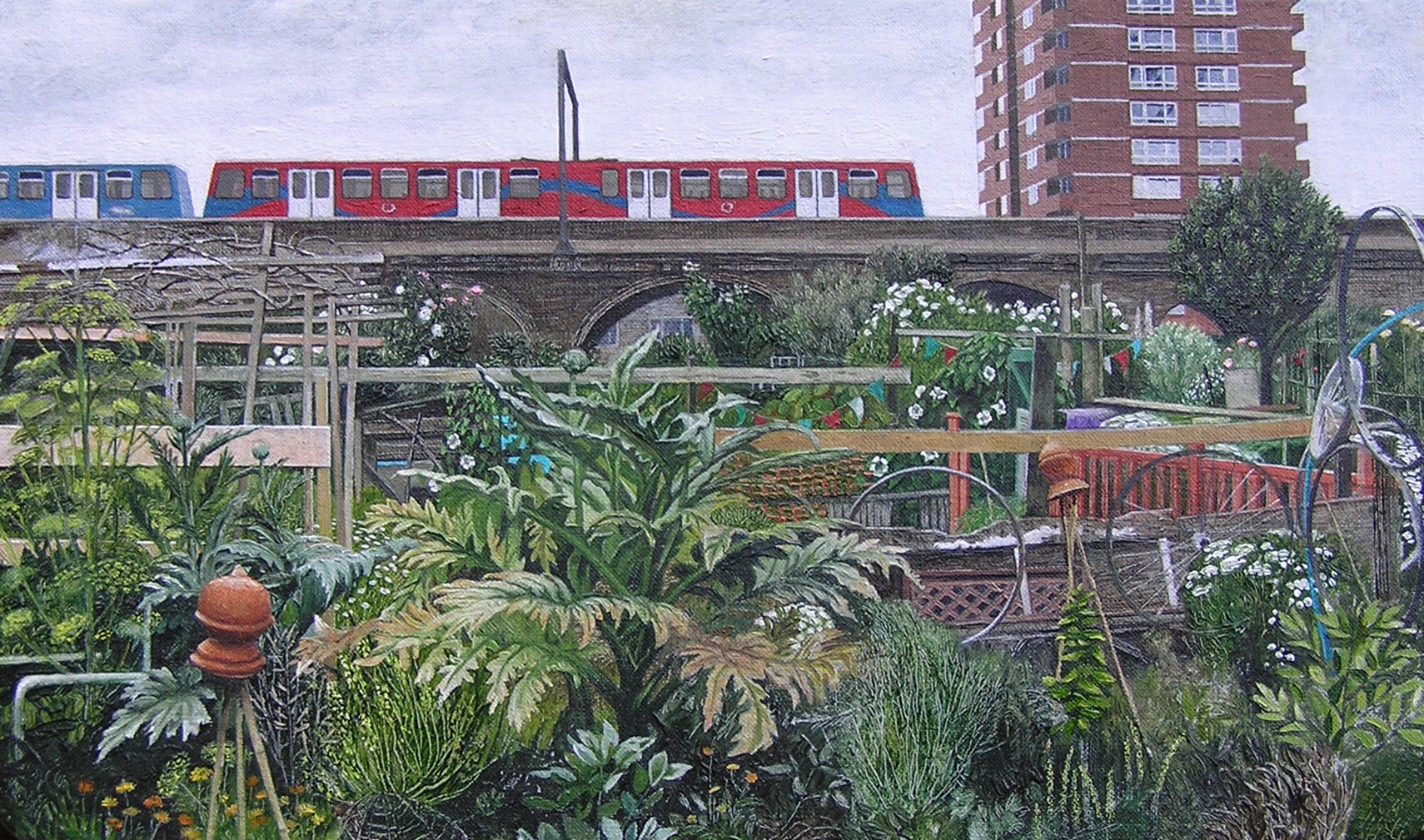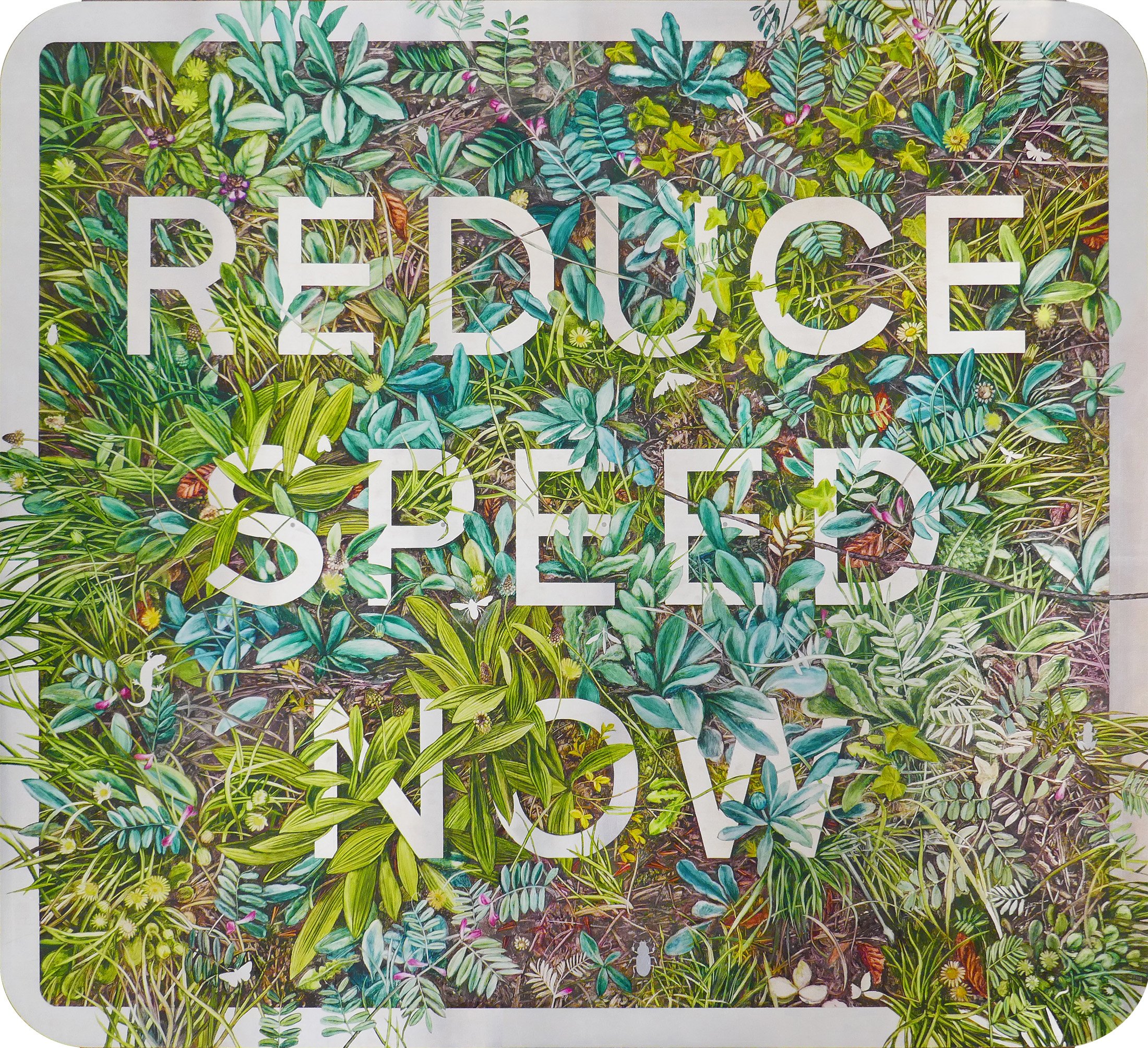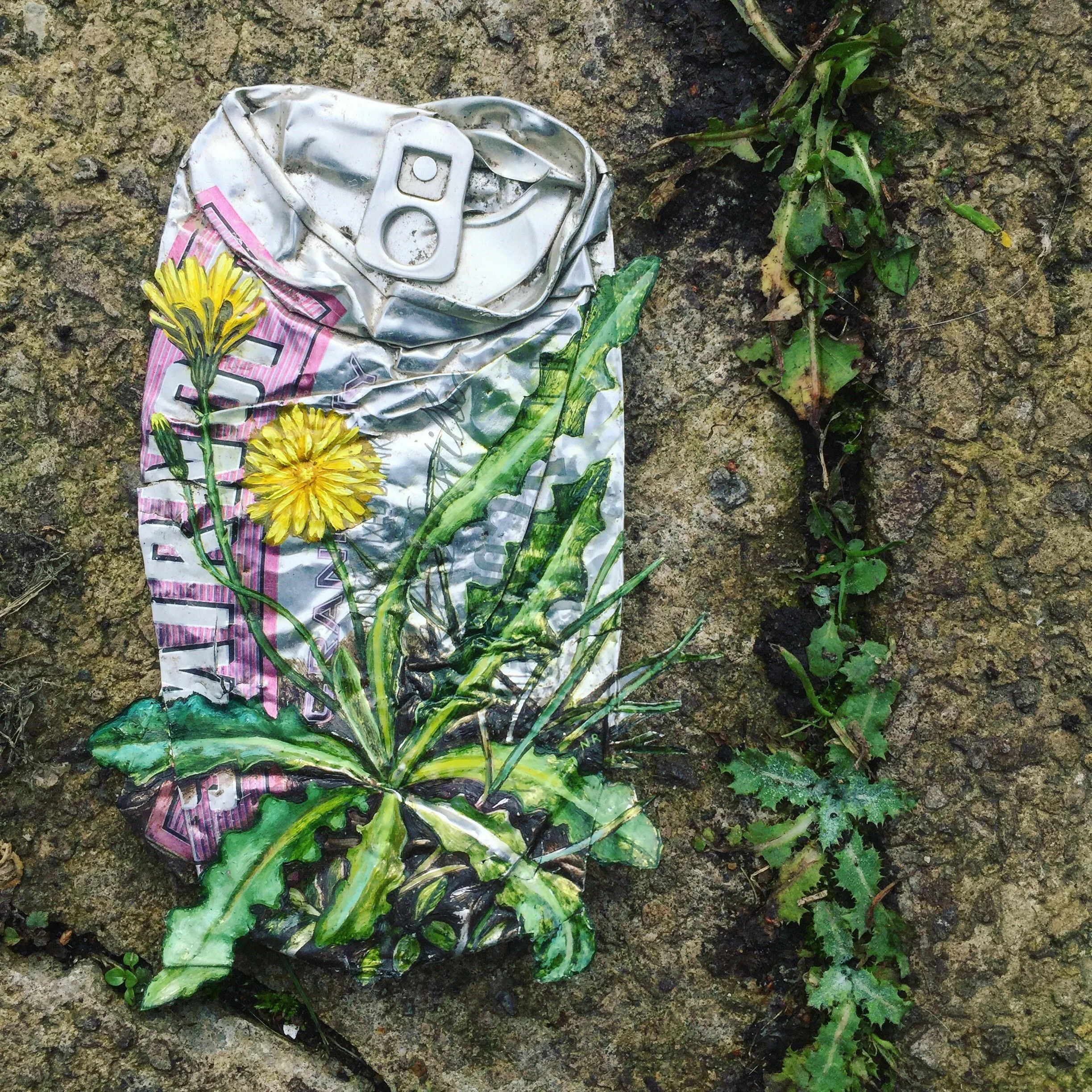ARTIST INTERVIEW: Nessie Ramm
Nessie Ramm
jamesratchfordphotography.com
@jamestatchfordphotography
Tell me about yourself. describe your journey as an artist.
I’m an environmental artist and contemporary landscape painter living in Sussex, UK. I have always loved both plants and art - right from the beginning. I made paintings all the time when I was growing up but I didn’t really think it was possible to be an artist full time, I thought making art would always be my hobby. I studied plant science, but couldn’t work out the next step - so I then gave myself a year of doing art while I worked out what to do next. The year became two, then three… and I’m still making art 25 years later.
How have your surroundings influenced your artwork?
I have always painted plants, but generally prefer to paint them within a human context rather than in isolation. So when I lived in London some of my favourite places to paint were allotments, gardens and city farms because they offer such amazing visual contrasts: for example artichokes growing in front of railway arches in Cable Street, sheep grazing in front of blocks of flats on the Isle of Dogs and tall sunflowers in a tiny front garden in Rotherhithe.
I live in rural Sussex now so I no longer have the urban backdrop. Instead, the road network with its associated service stations and industrial estates has become the human context to my plant paintings.
What is the story behind your Road Verge Paintings?
In 2017, I was on a hike on the South Downs Way with a good friend of mine. I’m always on the lookout for inspiration, and it was springtime so as we walked I was searching for flowers to photograph. We walked through beautiful rolling fields in a stunning landscape- but there were no wildflowers. Later on we had to cross the A24 dual carriageway as it sliced its way through the hills - and that’s where the flowers were! Hundreds of cowslips along the verge, nodding in the breeze of passing trucks. It was a glorious sight, but I was also filled with the injustice of it: the way that nature has been pushed to the boundaries, banished to the bits of land we don’t value.
What is the most interesting thing you have found on a road verge and where was it?
There are so many things. After the cowslips I began to notice interesting plants in the verges wherever I went. My children have got used to me making stops to take photos of scrappy litter-strewn lay-bys when we are travelling somewhere. Lots of plants I’ve only ever seen on road verges, nowhere else.
Finding orchids is always magical - like finding treasure. They have a complicated life cycle and pop up in odd places. They need undisturbed soil - because they rely on a wild fungus to help them germinate - so road verges can be surprisingly good places. My first ever bee orchid was on a roundabout in Arundel.
A few years ago I went to a meeting in an industrial estate in Wimbledon. I was struggling to navigate the place on foot but then came across a magical verge covered in oxeye daisies, with a marbled white butterfly to complete the scene.
Then there was the time I stopped at Cobham services on the M25 and thought I’d just look over the fence at the edge of the car-park to see what was there, and found hundreds of flowering teasels with turquoise damselflies fluttering about, plus bumblebees and butterflies, all around a man-made ‘attenuation pond’.
It’s amazing how nature can thrive on the scraps we give it.
What messages would you like to convey in your artwork?
My road verge paintings are where my love of plants and painting combines with my concern for the environment. In them, my life and work have come together. They are both a celebration of nature, even in the most ordinary setting, and a call to re-evaluate our relationship with nature. Nature is in crisis - both in terms of biodiversity and abundance. It’s incredibly scary if you look at the figures and we are stupidly disrupting the very life support systems of the planet which sustain us. But - I’m an optimist! At the same time, there is a lot of action around and I’m a great believer in that. Rewilding of large areas and small, environment awareness, new ways of doing business, protesting. If we act we can turn this ship around; nature recovers if given the chance.
Tell me about your painting process from start to finish of one of your works. What materials do you use?
When I want to make a painting I’ll look through my library of photos - taken when traveling or on a hike- to find a composition that I like. This is the starting point which may go through several cycles of drawing and photoshop before I’m ready to paint.
My painting process is as much about taking paint off as putting it on. Working on metal allows me to move the paint around and scratch into it to make very satisfying long stems and grasses. I don’t build up layers- I work from one side of the painting to the other, following my plan. I always have a jar of leaves on my desk to work from as well - my plan gives me the layout but there’s no substitute to working from life to add authenticity. I use fresh leaves of the right species as models, slotting them in to the composition as I go.
I work on scrap metal road signs a lot of the time- I like the smooth surface to paint on and it’s satisfying to re-purpose the material. Metal is infinitely recyclable, so it can go on again, to be something else.
Out of all your work, which piece are you most proud of?
My favourite is always the one I’m working on at the time!
What do you like the most about being an artist?
I don’t know any other life, but it suits me very well. The work is surprisingly varied - something I could not have predicted. It’s far more than just sitting in a room and painting; I have found myself running a children’s art programme on a city farm, working with printmakers, teaching adult evening classes, writing funding applications, giving talks, learning to manipulate digital imagery and talking in-depth with clients. Plus all the things that come with running a small business that are also part of the artist’s life: communication, time management, keeping track of finances, being the best (or worst) boss, knowing when to stop - and when to push on!
Why do you think art is important in society?
Whether it’s ‘important’ or not depends on how you define important and could be debated… but creativity in all its forms is something inherently human I think. Art is something we’ve always done and always will, a way to reflect and question, to mark our place and time. Artists often take a fresh look at what society considers worthless - which is an aspect that I really love; they transform and renew.













